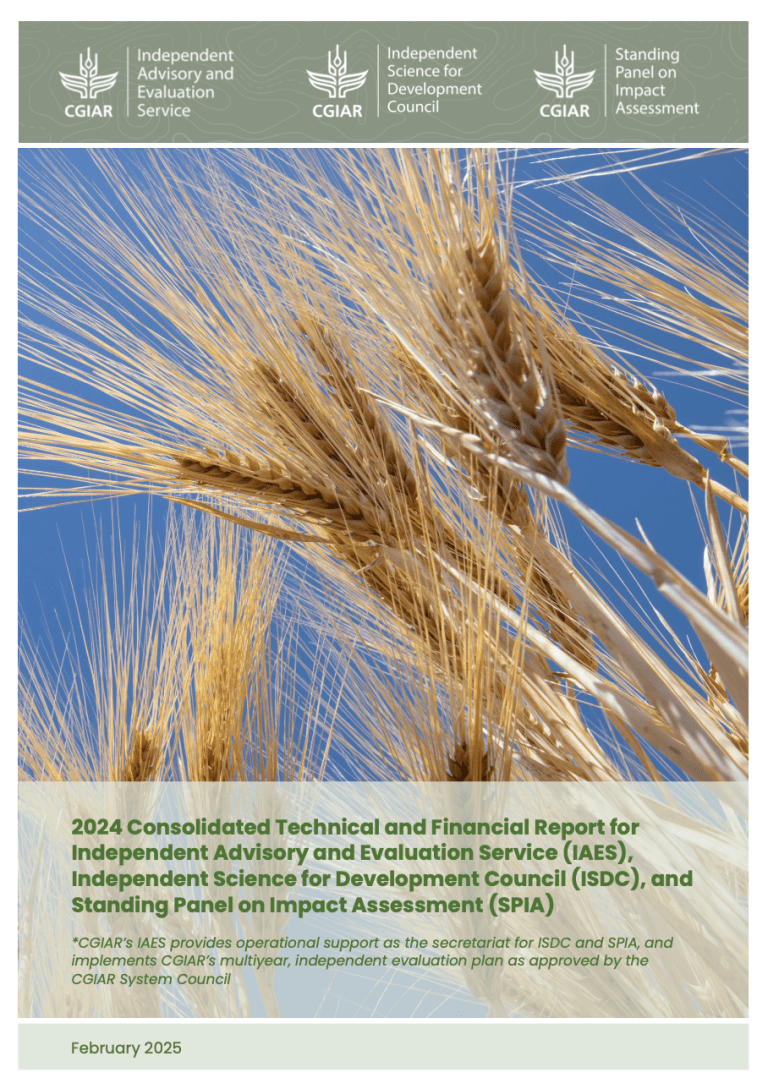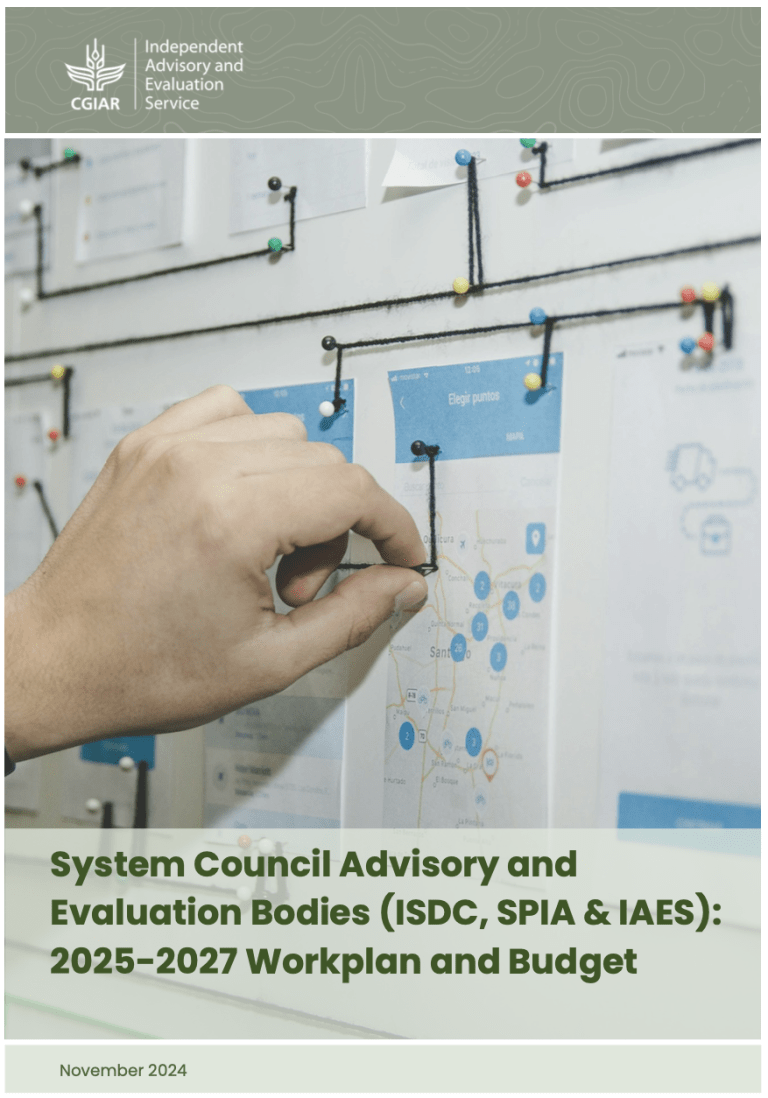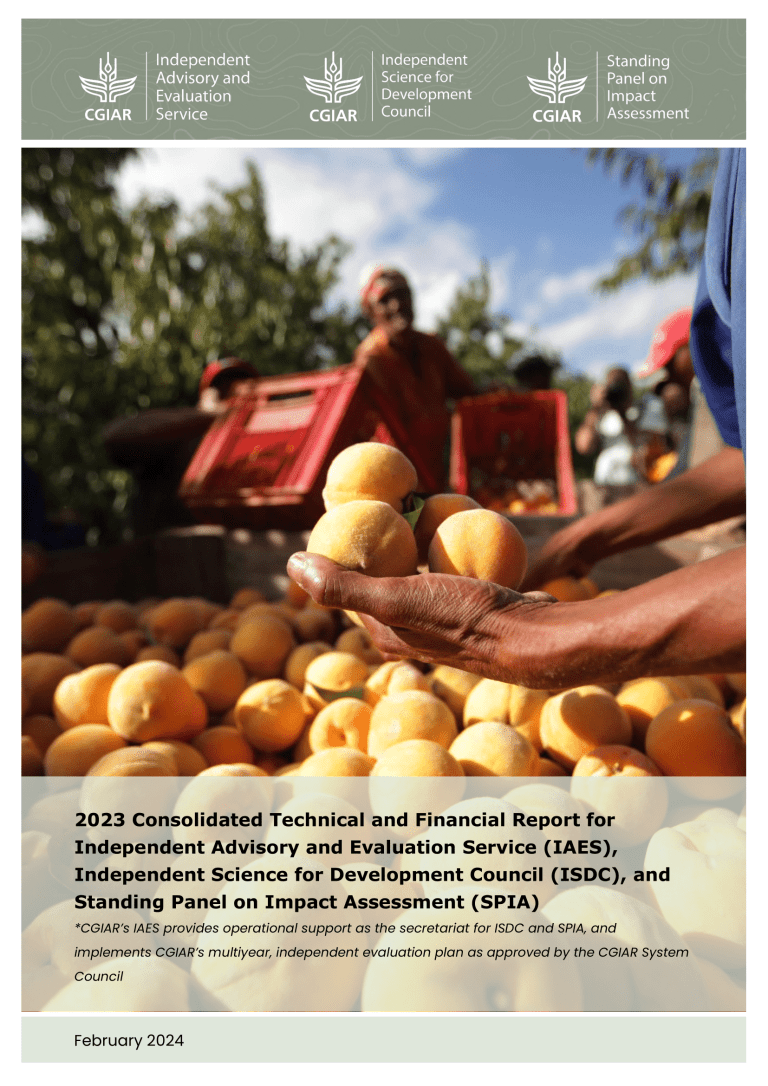Randomized controlled trials (RCTs) are commonly used in agricultural and development economics. As the RCT literature in agricultural development is growing, it has expanded to cover a broader set of research questions and tools. On August 24th the first of two SPIA invited sessions to the International Conference of Agricultural Economists (ICAE) brought examples of such new questions and tools in the agricultural RCT literature through presentations of three recent papers.
The 31st International Conference of Agricultural Economists (ICAE) took place virtually between 17-31 August 2021. SPIA organized and hosted two sessions.
Session 1. “Measurement and other challenges in designing RCTs on agricultural research for development”
Session 1 was chaired by SPIA panel member Kyle Emerick, Tufts University, and featured presentations of three RCTs looking at adoption of a rainwater harvesting technology in Niger, a product assurance scheme in Uganda and demonstration models for agricultural technologies in Bangladesh.
Recording of Session 1:
Below is a summary of all the exciting presentations and discussions from the first session.
Jenny Aker, from Tufts University, spoke about a study of the adoption of the “demi-lune” rainwater harvesting technique in Niger. Her study uses a cluster randomized control trial to test the importance of three types of barriers to adoption of the technique, constraints to information, credit and labor respectively. Treatment groups were training on the technology (all groups), conditional cash transfers (one group) and unconditional cash transfers (two groups with different timing of the transfer). Results show that, as complements to training, cash transfers (whether conditional or unconditional) do not have any additional effect on adoption on the extensive margin but increase intensity of adoption. The study also finds impacts on downstream outcomes, such as agricultural production, household labor and indicators of household well-being.
The discussant, Lorenzo Casaburi from University of Zurich, mentioned the importance of this study for African agriculture in the context of climate change and population growth, and that it fills an important gap as there is little experimental work on the topic. He also suggested to explore the possibility of looking at output effects separately for degraded and non-degraded land and to clarify the contributions of the paper to the literature on training.
The Q&A discussion featured a question about the potential to follow up on the maintenance of demi-lunes. Jenny Aker explained that her study does indeed strive to look at demi-lune maintenance using remote sensing data.
Naureen Karachiwalla, from IFPRI, presented a paper evaluating a product assurance scheme for hybrid maize seed in Uganda. Their study is motivated by the high prevalence of credence goods (i.e., whose quality cannot be easily ascertained by consumers even after purchase) in low-income countries. Through an encouragement design, they evaluate the effects of the Kakasa product assurance scheme on the quality, price and quantity purchased of hybrid maize seeds, as well as on farmer beliefs. They introduce a demand shock by providing subsidies for Kakasa hybrid maize to randomly selected communities and find that quality, price, and amount purchased increase for both tagged and untagged maize. They reason that this result can be explained by the fact that Kakasa and non-Kakasa products are sometimes available in the same shops and can be considered close substitutes.
The discussant, Lauren Bergquist from University of Michigan, considered this study as a new solution to an important problem of low-quality products in low-income countries. She alluded to the fact that low quality products can be harmful or ineffective and mentioned that potential policy options also emerge in the paper. She also mentioned the need to pay more attention to the specific points along the supply chain where quality gets altered and to the theory of change in relation to the subsidy program, since Kakasa program in itself is not randomized.
Florence Kondylis, from the World Bank, presented a study looking at extension models for flood tolerant seeds, trying to find the optimal allocation of resources for a given amount of total demonstration resources. Through a field experiment in Bangladesh, the study compares the more traditional model using demonstration plots, to two alternative models where multiple farmers use the new technology on smaller experimental plots in their own farms. The first of the alternative models uses four farmers that demonstrate the technology on their own land, while the second alternative model allows all interested farmers to “self-demonstrate” by using the technology on a smaller portion of their own land. In the pooled analysis, the study finds that demonstration (all treatment arms) increases adoption in the medium and long run. The optimal mode of demonstration depends on the relevant time horizon. Additional demonstrators increase medium run adoption. However, the adoption rates in the different treatment arms converge over time.
The discussant, Kyle Emerick, expressed excitement about the focus on flood tolerant seeds, demonstration plots and about the multiple follow-ups in the study. He suggested to look more closely at the mechanisms that rationalize the obtained results.
In conclusion, it was a rewarding session that brought examples of the various ways in which experimental designs can contribute to agricultural economics. We saw that such studies can provide useful policy implications on efficient use of resources in extension services and in resolving market failures due to lack of information in credence good markets. The presenters shared their reflections on more or less expected findings and discussants provided suggestions for how to further investigate the mechanisms behind these results. The discussion provided insight into measurement challenges and the importance using indicators that capture what the study intends them to.
Session 2. Methods for Documenting Reach and Impacts at Scale of Agricultural Research for Development took place on August 28th, 2.00-3.30pm CET.
In this session, Nobel Laureate Michael Kremer spoke about a portfolio-level approach to assess the return on large investments in innovation, Paola Mallia from PSE and Solomon Alemu from the SPIA research team presented a country level approach to track the diffusion of agricultural innovations in Ethiopia and Nathaniel Jensen presented how to measure long-term, large-scale impacts of agricultural innovations focusing on the experience of the Index Based Livestock Insurance in Kenya.
Recording of Session 2
If you are interested in hearing more about measurement challenges and the use of remote sensing in the demi-lune study, Jenny Aker will be presenting at the October session of the SPIA webinar series. Join at 1.30-3.00pm CET on October 20 using the link that will be provided on the webinar series page.



